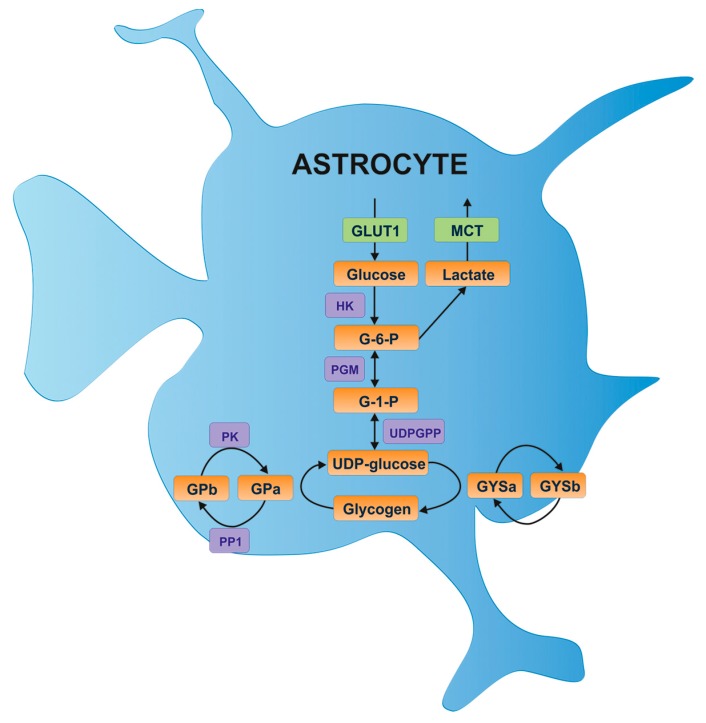Figure 1.
Glucose entry and glycogen formation in astrocytes [13]. Glucose is transported via the glucose transporter 1 (GLUT1) and possibly the insulin-sensitive glucose transporter 4 (GLUT4). Glucose is phosphorylated by hexokinase (HK) to glucose-6-phosphate (G-6-P), which is subsequently converted to glucose-1-phosphate (G-1-P) by phosphoglucomutase (PGM) and then to UDP glucose by UDP glucose pyrophosphate (UDPGPP). The UDP glucose continues on to glycogen synthesis via the actions of glycogen synthase (GYS), which can exist in two forms: the active dephosphorylated form (GYSa) or the inactive phosphorylated form (GYSb). Protein phosphatase 1 (PP1) converts GYSb to active GYSa via the regulatory subunit Protein Targeting to Glycogen (PTG), resulting in glycogen formation. Glycogen is broken down by glycogen phosphorylase (GP), which similar to glycogen synthase exists in two forms: the active phosphorylated form (GPa), or the inactive dephosphorylated form (GPb). Phosphorylase kinase (PK) dephosphorylates GPb to the active form. A major glycogen-derived product is lactate, which is transported into the extracellular space via monocarboxylate transporters (MCT).

